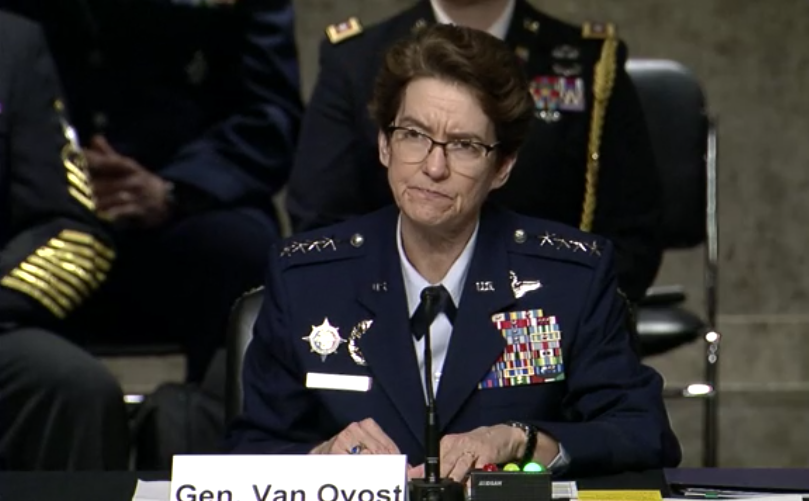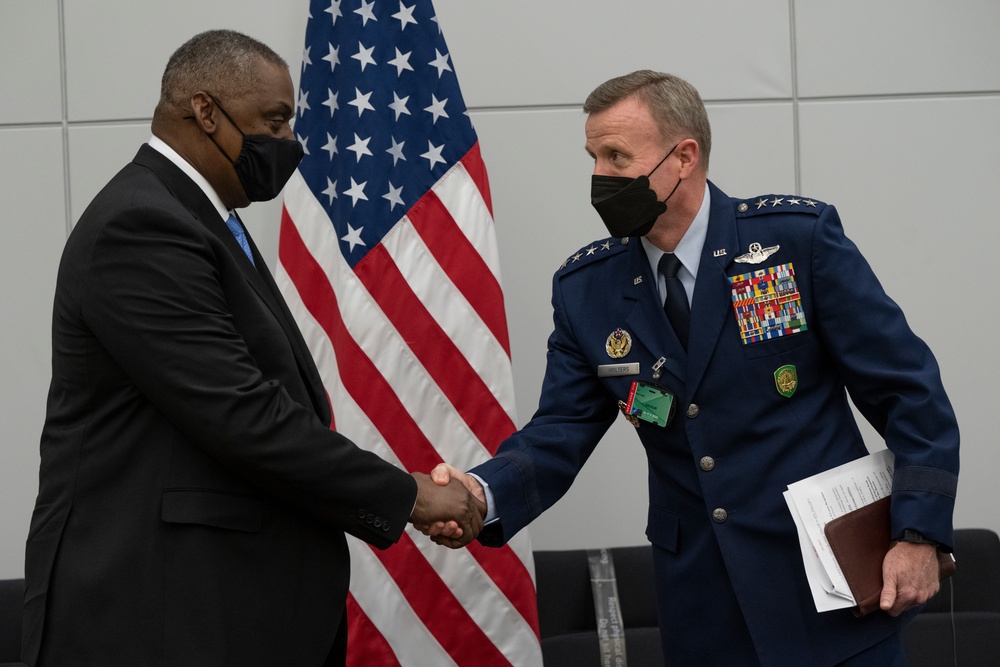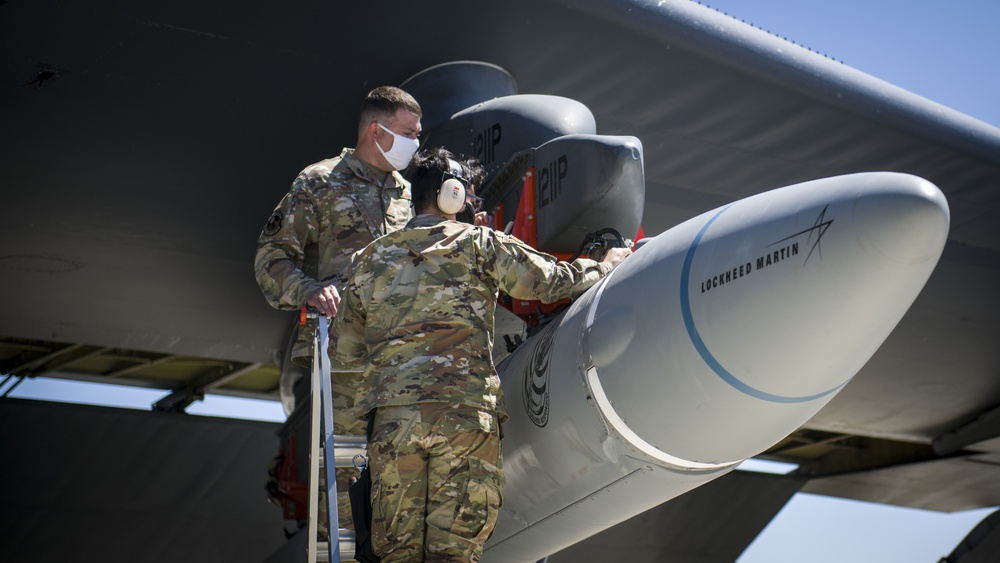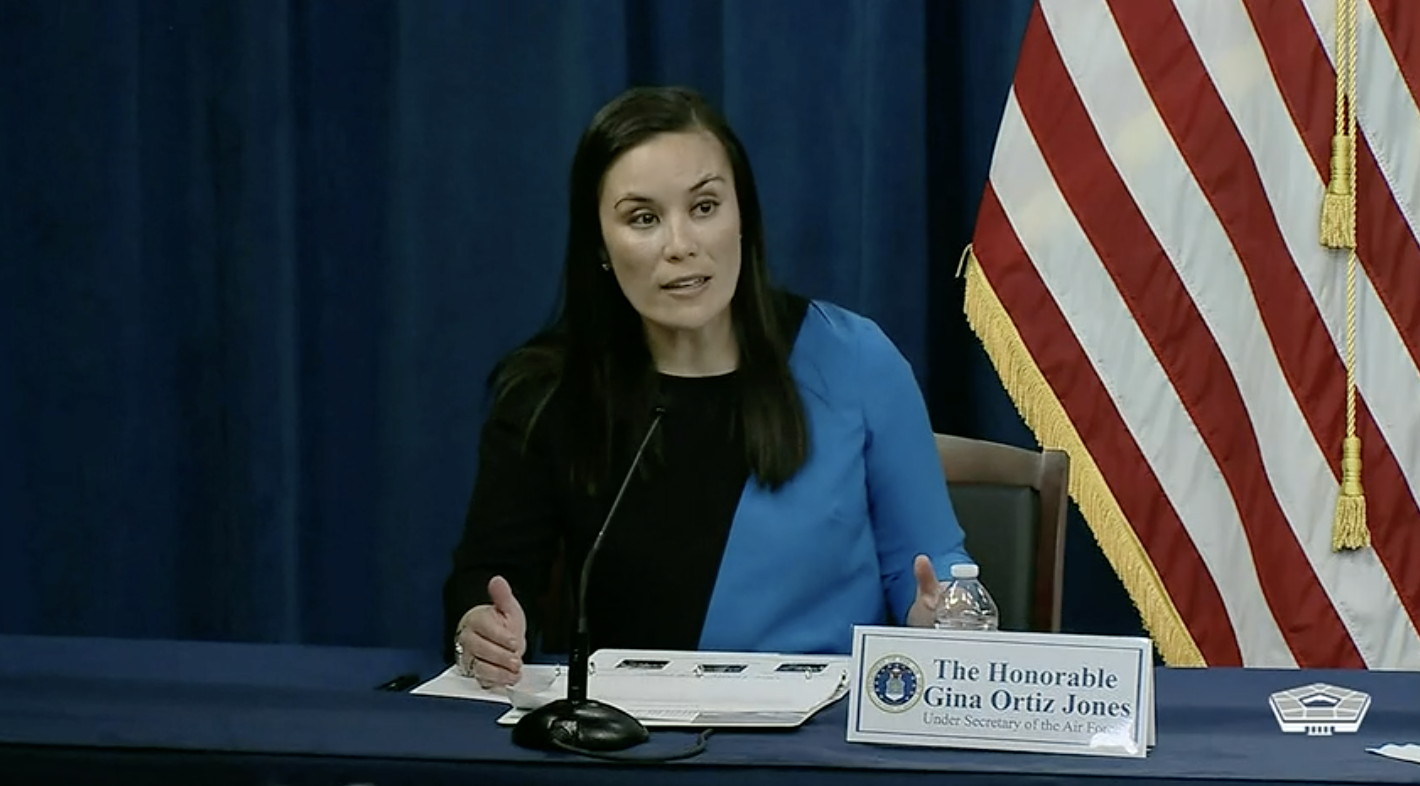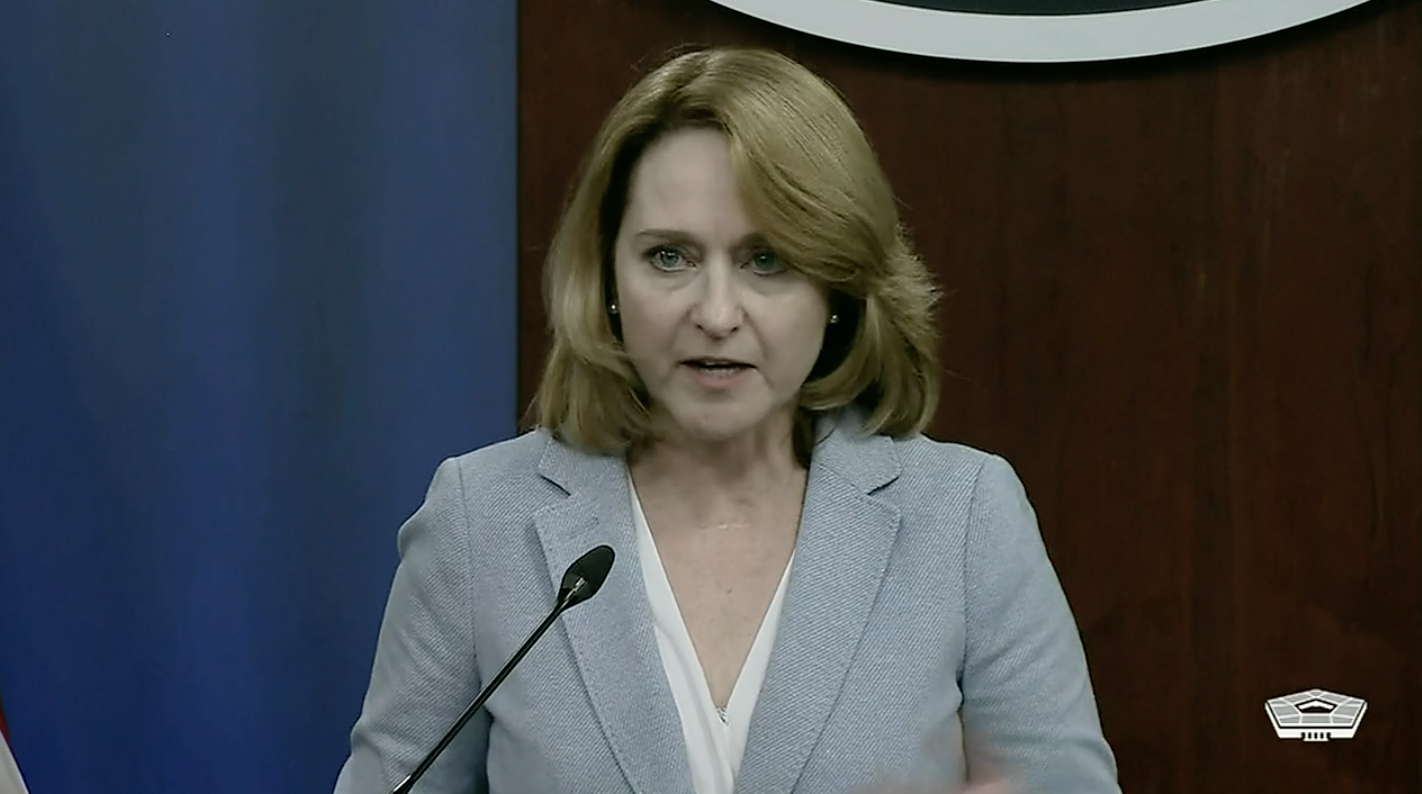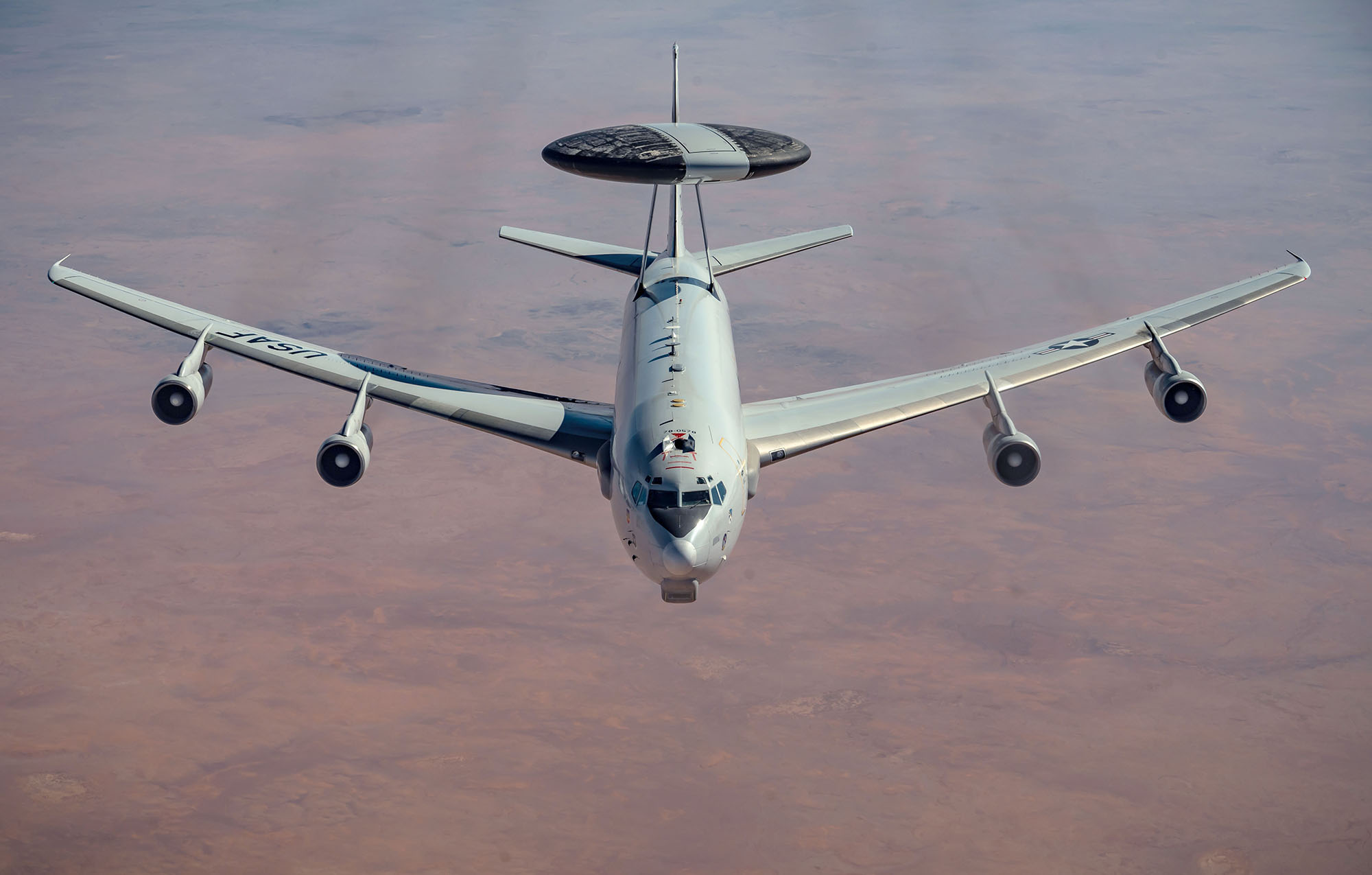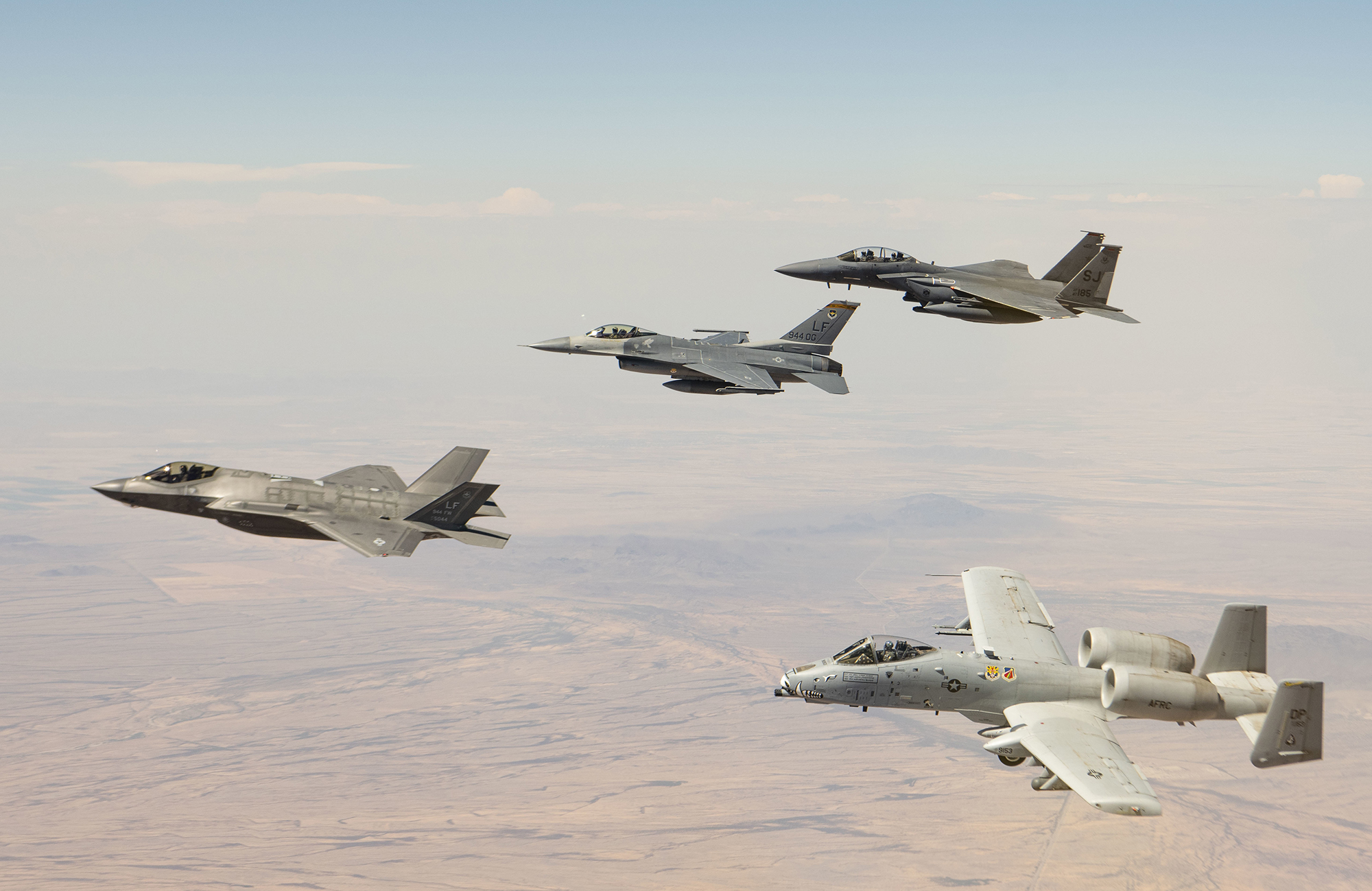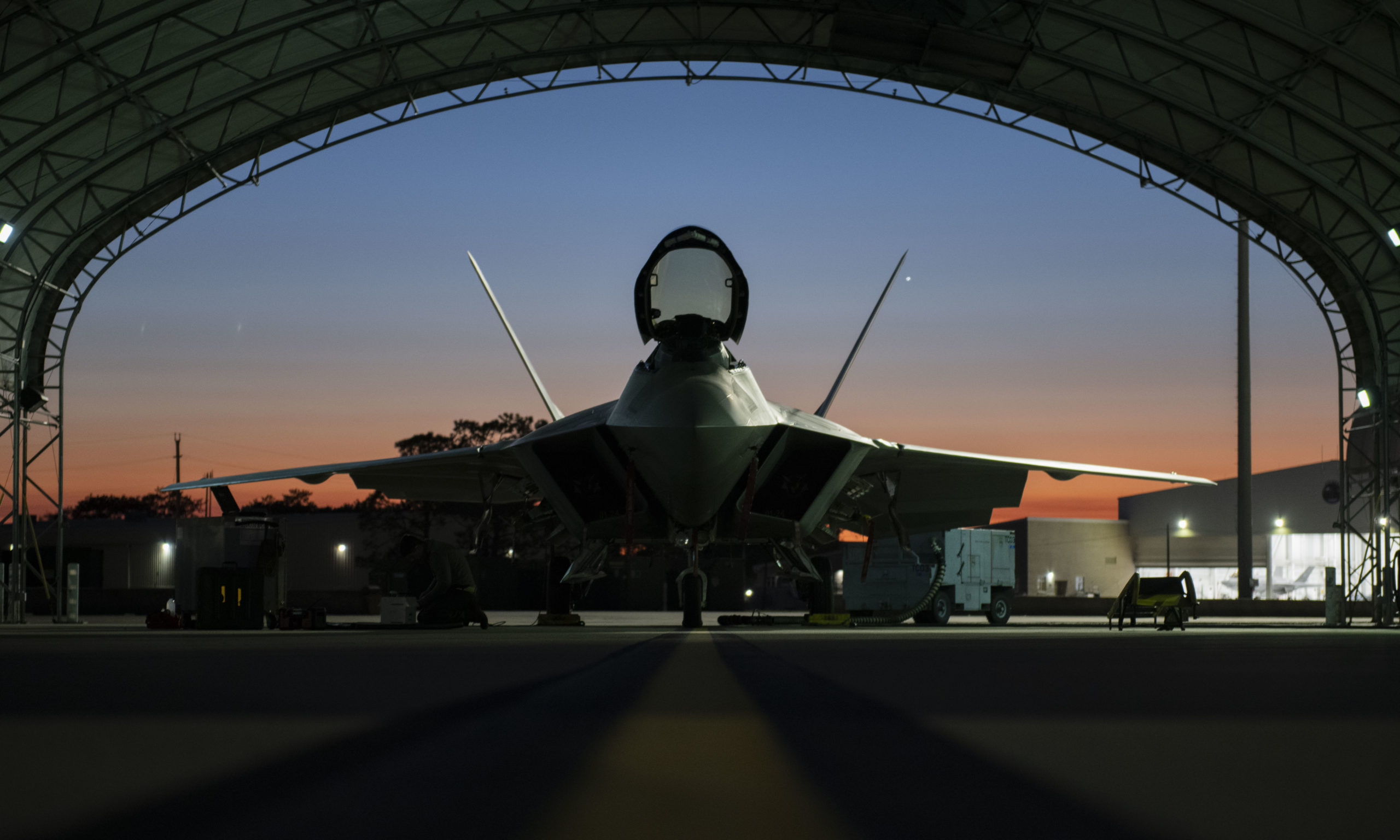The Defense Department’s $773 billion fiscal 2023 budget request contains a 4.6 percent pay raise for service members and DOD civilians, a figure touted by officials during the March 28 rollout as the largest increase for troops in 20 years. But at the same time, a new program included in the budget is aimed at helping service members living near the poverty line, highlighting concerns about the effects inflation is having on the rank and file.
“How we take a look at inflation and the pressures that it puts on our service members are front and center to everything we do,” Vice Chairman of the Joint Chiefs of Staff Adm. Christopher W. Grady told reporters. “We look at everything from child care to food insecurity, and certainly inflation can put a pressure on that. It can put pressure on the budget for sure, but it can put a pressure on our people. So staying in tune to the needs of the center of our universe, our people, that Total Force, is absolutely central to building an enduring advantage.”
In the private sector, data has already shown that soaring inflation, especially for things such as housing, food, and gas, has blunted the benefits of increased wages for many. Looking to address those issues, the 2023 budget request also includes an average bump of 4.2 percent for the Basic Allowance for Housing and 3.4 percent for Basic Allowance for Subsistence.
The average home price went up 17 percent in 2021, and rent prices went up 10.1 percent. Food prices are up some 7 percent as of late.
Deputy Secretary of Defense Kathleen H. Hicks noted that the rate of inflation could change before the 2023 fiscal year begins in October or by the time it ends in 18 months. Still, the Pentagon is looking to address the underlying issue of economic insecurity for service members through a new account called the Basic Needs Allowance, officials said.
Exact details for how the account will be paid out are still being finalized, USAF budget director Maj. Gen. James D. Peccia III told reporters. But service members will have to apply for the program, Peccia said, with the exact amount they received based off a “long equation.”
“Essentially, if a person’s pay did not exceed the amount that is equal to 130 percent of the federal poverty guidelines of the Department of Health and Human Services, then [the payment will] be equal to 1/12 of the difference between 130 percent of that federal poverty guideline and the gross household income,” Peccia said. “So that’s why I say, you know, every case will be different. We’ll have to take a look at every Airman and every Guardian and their needs.”
Since details are still being worked out, the service isn’t quite sure how much money it will need to dedicate to the program, Peccia added, saying it needs a “year or two to get it under our feet to figure it out.”
“We added $300,000 in there to address any economic insecurities for younger members who might be having financial problems—$300,000 is what was put in the budget. We don’t know what the requirement will truly be,” Peccia said. “Whatever it is, we will pay when we get to the year of execution, but that’s what was put in the budget to start the fund.”
In addition to the new account, the DOD’s budget overview also indicated that it would contain an increase in the cap for child care fee assistance from $1,500 per month to $1,700. The most recent data from 2020 indicates that child care costs have risen faster than inflation.
“[Defense Secretary Lloyd J. Austin III] is very focused on economic security for service members,” Hicks said, citing the various increases in funding in the budget. “So those are all areas that we have put investments in this year. I mentioned child care and a few others you’ll see, all of which are going to be helpful in terms of resiliency around issues of inflation.”
End Strength Adjustments
While wages and benefits are set to increase for service members in the 2023 budget request, the Pentagon is asking to cut its overall end strength. The Army will see the biggest reduction, backing off its ambition to have 485,000 Active-duty Soldiers, a figure funded in the 2022 National Defense Authorization Act, and asking instead for an end strength of 473,000 in 2023.
The Air Force, which is currently authorized for 329,220 Active-duty Airmen, is requesting an Active-duty end strength of 323,400—a decline of roughly 1.8 percent, which Air Force Secretary Frank Kendall linked to the department’s efforts to retire 250 aircraft.
“We’re basically taking some end strength out associated with the divestments,” Kendall said.
According to the Air Force Personnel Center, there are 329,597 Active-duty Airmen as of Feb. 28.
The Space Force, meanwhile, is slated to grow by around 2.4 percent, going from 8,400 service members to 8,600.
“Part of that is for transfers from the Space Development Agency, and part of that is inter-service transfers, where members from other services, on the officer side anyway, will relinquish their commission from that service and be re-commissioned into the Space Force,” Peccia said.

